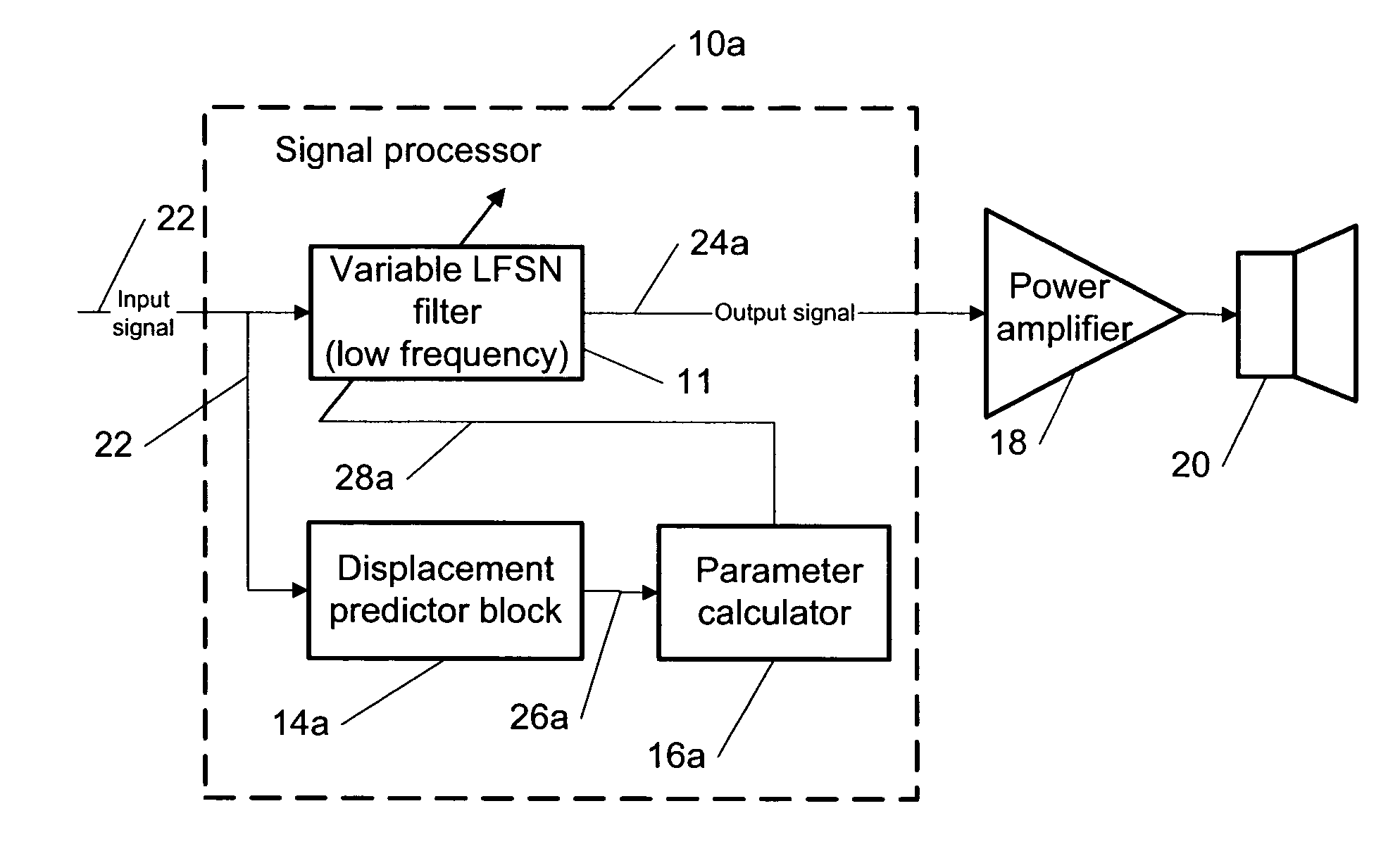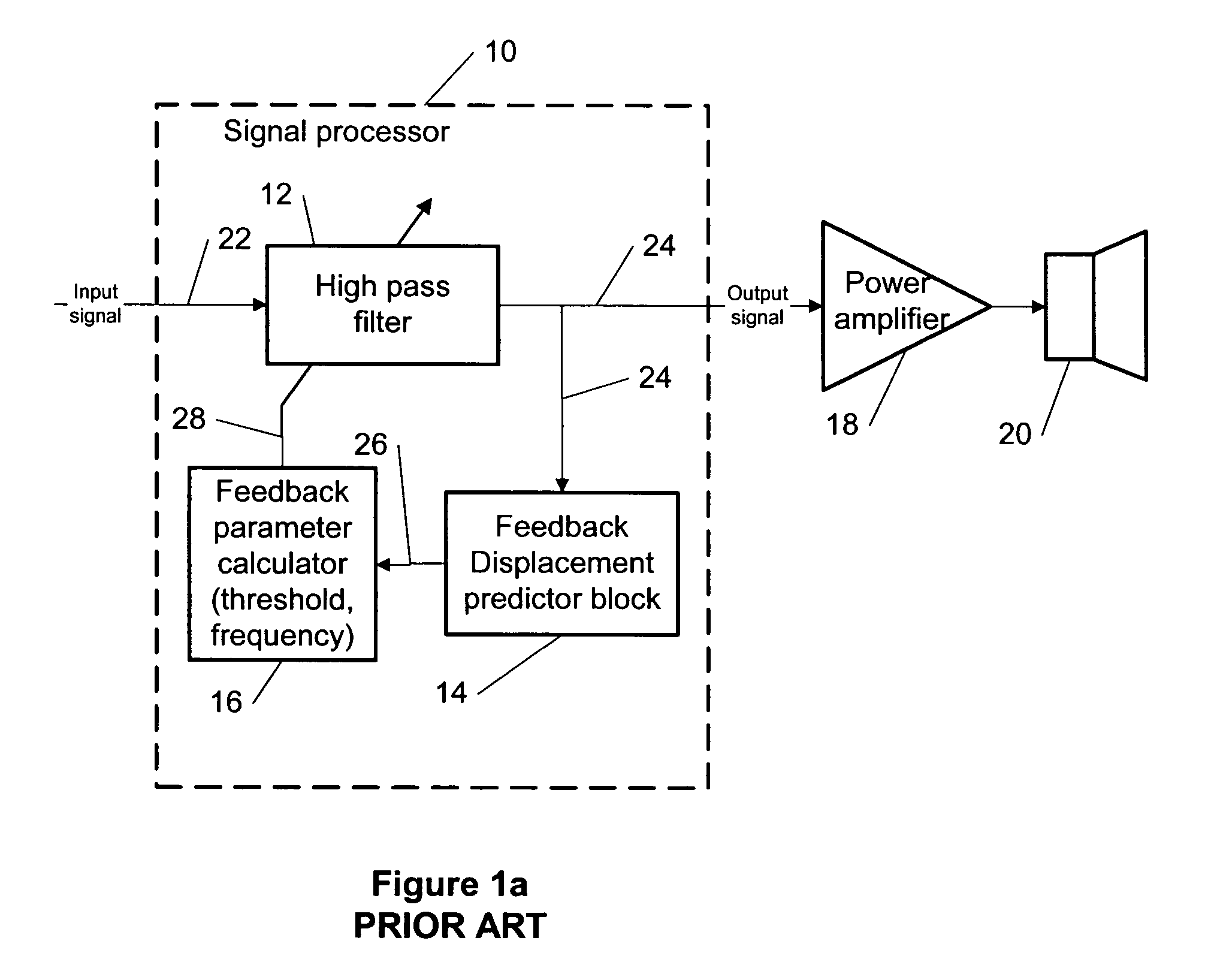System for limiting loudspeaker displacement
a loudspeaker displacement and signal processing technology, applied in the field of electroacoustic transducers, can solve problems such as difficulty in implementing signal processing, irregular behaviour of feedback loops around threshold values, and difficulties in the prior art in the first category
- Summary
- Abstract
- Description
- Claims
- Application Information
AI Technical Summary
Benefits of technology
Problems solved by technology
Method used
Image
Examples
Embodiment Construction
[0045]The present invention provides a novel method for signal processing limiting and controlling a vibration displacement of a coil-diaphragm assembly in electro-acoustical transducers (loudspeakers). The electro-acoustical transducers are devices for converting an electrical or digital audio signal into an acoustical signal. For example, the invention relates specifically to a moving coil of the loudspeakers.
[0046]The problems of the prior art methods described above for the displacement limiting is solved by starting with the first category approach, and making the following modifications:[0047]Replacing the variable high-pass filter 12 (see FIG. 1a) with a variable low-frequency shelving and notch (LFSN) filter;[0048]Using a feedforward instead of a feedback control of the filter 12 by the displacement predictor block;[0049]Employing a digital implementation;[0050]Approximating the exact formulas for calculating required coefficients by finite polynomial series.
[0051]According ...
PUM
 Login to View More
Login to View More Abstract
Description
Claims
Application Information
 Login to View More
Login to View More - R&D
- Intellectual Property
- Life Sciences
- Materials
- Tech Scout
- Unparalleled Data Quality
- Higher Quality Content
- 60% Fewer Hallucinations
Browse by: Latest US Patents, China's latest patents, Technical Efficacy Thesaurus, Application Domain, Technology Topic, Popular Technical Reports.
© 2025 PatSnap. All rights reserved.Legal|Privacy policy|Modern Slavery Act Transparency Statement|Sitemap|About US| Contact US: help@patsnap.com



